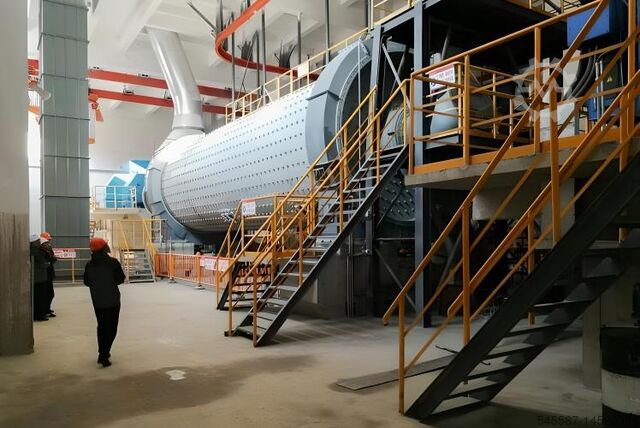Used Centrifugal Grinding Plant for sale (7,713)
 Zheng Zhou Shi
Zheng Zhou Shi Grinding mill
Abrasive Aluminium Oxide Grinding PlantMicrosilica powder Grinding Mill
 Zheng Zhou Shi
Zheng Zhou Shi Fine Powder Grinding Plant
Cement mill & Ultrafine Grinding MillFine Powder Grinding Plant
 Zheng Zhou Shi
Zheng Zhou Shi Cement mill,clinker grinding plant
Clinker grinding mill / cement ball millcement grinding with air classifier

+44 20 806 810 84
 Zheng Zhou Shi
Zheng Zhou Shi Roll forming line
Rod ball mill / Rod Grinding MillFor Sand and mining beneficiation plant
 Zheng Zhou Shi
Zheng Zhou Shi Roll forming line
ball grinding mill for mining &fine sandsilica/Barite/limestone powder plant
Discover more used machines
 Fulda
Fulda GoodYear tire production plant closure
Troester, Kobelco, CollmannMixer, Extruder, Building, Grinding
 Germany
Germany Slip Grinding Plant
SPALECKSpiratron ST 250B
 Dietzenbach
Dietzenbach Centrifugal grinding machine
KSM
 Dreieich
Dreieich Slip Grinding Plant
RÖSLERR 220 EC
 Grüsch
Grüsch Slip Grinding Plant
RÖSLERRM780
 Berlin
Berlin Grinding Plant
Neumannn & Esser GmbHPM 00 O1
 Bayern
Bayern Centrifugal grinding machine
PERSTurbo-Line 140 S
 Germany
Germany Slip Grinding Plant
WALTHER TROWALG 500 B
 Dreieich
Dreieich Slip Grinding Plant
ROTO-FINISH / CETEMATM 125
 Germany
Germany Slip Grinding Plant
WALTHER TROWALCVE 125
 Dreieich
Dreieich Slip Grinding Plant
RÖSLERR 620 Euro
 Dreieich
Dreieich Slip Grinding Plant
RÖSLERR 620 EC
 Dreieich
Dreieich Slip Grinding Plant
RÖSLERR 260 EC
 Dreieich
Dreieich Slip Grinding Plant
RÖSLER TrocknerRT 250 EURO
 Undoolya
Undoolya Mobile concrete mixing plant
PROMAX Mobile Concrete Batching PlantMobile Concrete Batching Plant
 Bulgaria
Bulgaria Pasta processing machine
PAVAN, Italy PASTA PLANT2600 kg/hr
 Medvode
Medvode Guide rail grinding machine
Grinding Machine
 Melksham
Melksham Whey Processing Plant
Cheese whey processing plant15,000 Litre/Hour
 Tipton
Tipton SURFACE GRINDING MACHINE
SURFACE GRINDING MACHINEFSG-1640 AD
 Turkey
Turkey Mobile crushing plant / Screening plant
FABO Mobile Crushing PlantMobile Crushing and Screening Plant
Used Centrifugal Grinding Plant (7,713)
Search Machineseeker now with more than 200,000 used machines:Browse through the most popular machine descriptions:
This may be of interest to you

+44 20 806 810 84













































































































































































































































